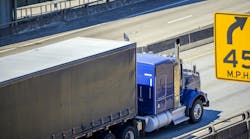Everyone is in favor of cleaner trucks and a cleaner environment; that’s a fact. Battery-electric vehicles are definitely where the future is headed, but diesel trucks will continue to play a role for the foreseeable future.
Diesel trucks keep getting cleaner
The industry is not just waiting for BEVs to dominate to ensure a cleaner environment and meet emissions standards; instead, it has consistently built diesel trucks that are cleaner and more efficient than ever.
Last week, FleetOwner published an article on the state of diesel in trucking’s future. During a speech at the Green Truck Summit, Mary Aufdemberg, GM of product strategy and market development for Daimler Truck North America, stated, “We have not stopped making this a cleaner world. In the past 15 years, the emissions from semi-trucks have been reduced by more than 20%, but we want to do more.”
As an example, she noted that “a heavy-duty truck built 30 years ago produced more emissions than 60 new diesel trucks built today.”
Fleets should still plan for BEVs
We’ve all been made aware of the issues that impact how and when BEVs will dominate, but each of these challenges is being addressed.
Infrastructure: There is a shortage of charging stations nationwide, but far more concerning is the eventual impact on power plants. Fortunately, the Infrastructure Investment and Jobs Act addresses both these issues. Besides the $110 billion earmarked for basic bridge and highway projects, $65 billion will be used to upgrade a rapidly aging grid. Since BEVs will be competing with business and consumer electricity needs, the upgrade is essential. An additional $7.5 billion will go toward a network of charging stations along highways.
Cost: There’s no question that battery-electric trucks are costly, but there has also been a significant increase in the cost of all commercial trucks, including diesel. Advanced technology is always expensive upfront but will often pay for itself with greater fuel efficiency and lower maintenance costs. Though currently there are questions about the loss of cargo capacity due to the heavier weight of batteries, we only have to look at our cell phones to see how the advancement of technology can decrease in size yet provide more power. There are many companies working on this, from using solid-state cells with anodes made of metallic lithium instead of graphite (noted by the U.S. National Science Foundation) to using nanomaterials to improve the performance and efficiency of batteries. This will also reduce weight. Stellantis is working to cut the weight in half for these batteries, and once manufacturers can do that for cars, trucks will likely follow.
Range: The distance that BEVs can go on a single charge has increased substantially; however, the time it takes to fully charge each vehicle well exceeds the time it takes to fill a tank with diesel. To deal with this, until the electric grid is fully operational or charging time decreases, fleet managers and logistics experts will need to plan their charging times and locations to ensure that every vehicle has the full power it needs. In addition, there are some concerns regarding a drop in range during cold weather. There are ways to mitigate the issue using thermal management technologies. For local routes, this loss of range is not a major problem. However, since this issue was identified, companies that are working to make batteries lighter are also working to make them more resistant to cold-weather challenges.
See also: Hyzon helps fleet cover its bases before implementing hydrogen fuel cell EVs
The future awaits
Fleets should prepare for a hybrid goal for the foreseeable future: a combination of BEVs and diesel. As technology moves forward, BEVs will dominate, and fleets that have prepared for this eventuality won’t find themselves out in the cold (no pun intended).



